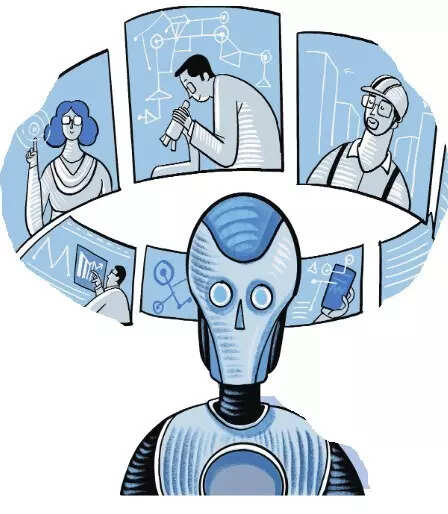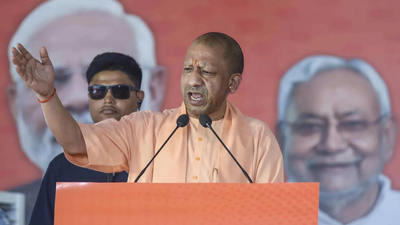
By invitationThe fear of machines taking away jobs is all too familiar. It first created panic when the Industrial Revolution hit. Then came the digital age. But the rapid evolution of AI poses the possibility of job losses on a scale and form not seen before. That’s why India must revamp how it educates and upskills its youth to catch upFor more than two hundred years, each wave of new technology and innovation has carried with it a familiar fear that machines would take away people’s livelihoods. During the Industrial Revolution, the mechanisation of textiles and manufacturing triggered fears of “technological unemployment.” This panic even gave rise to the famous Luddite movement in England, where textile workers destroyed looms they thought would make their jobs obsolete. In reality, while machines did replace some manual weavers, industrialisation also generated vast new opportunities in factories, coal mining, engineering, and other emerging sectors.

.
After World War II, automation and computers revived fears of a “jobless future”. Clerical roles like typists vanished, but new opportunities in software, electronics, and IT created even more jobs. The 1990s internet boom again disrupted work, with automation and outsourcing displacing factory and call-centre jobs. Yet, fresh industries emerged in e-commerce, app development, digital marketing, and cybersecurity.However, this time around the concern seems different and justifiable. The rapid evolution of AI and automation poses the possibility of job losses on a scale and form not experienced before. A McKinsey report estimates that by 2030, automation could replace up to 30% of hours worked in the US, forcing 12 million workers to shift roles. The ILO (International Labour Organization) warns the impact could be even more severe in India, with nearly 70% of existing jobs at high risk from AI and automation.Unlike earlier waves of innovation, even cognitive roles like coding, medical diagnosis, creative content, recruitment, customer support are all increasingly automatable. Now, with robotics and AI, even non-routine manual tasks such as warehouse picking, surgery assistance, and food preparation face the risk of being automated.But the situation is not really as grim as it may sound. If history is any guide, while many occupations will require people to work alongside technology, AI and robotics are likely to add net jobs. American economist David Autor has for long argued that tech and innovation have led to productivity growth, directly augmenting employment. Productivity growth in one sector generates large positive spillovers to employment growth elsewhere in the economy.For a developing economy like India, whether technology and innovation in AI, robotics, and automation lead to a net gain in jobs will largely depend on two key factors. One, how well we equip our students and the workforce through skilling and upskilling and make them job ready; and two, how strongly we invest in research and development.India’s biggest challenge today is that our skills and institutions have not kept pace with rapid shifts in technology. Each year, over 10 million students graduate from colleges and universities, yet the job market struggles to absorb them. A recent report by Mercer Mettl puts the employability of graduates in India at 42.6%. Multiple studies find that 85% of Indian engineering graduates are not job-ready. Our school education relies on rote learning with little focus on practical skills and critical thinking. Higher education is theory heavy.First, we must revamp our skilling programmes with a forward-looking lens, aligned to jobs of the future. Many semi-skilled roles will sustain and grow, be it in frontline sales, relationship managers or after-sales support in banking, financial services and insurance (BFSI), retail, and telecom, due to our cultural preference for trust and personal interaction. These can absorb large sections of young, educated workers.Similarly, delivery and logistics roles in quick commerce will expand, offering opportunities for lows-killed workers where machines cannot easily replace humans. With India’s tourism and hospitality sector set to grow, demand will rise for frontline staff, travel consultants, chefs, guides, and wildlife experts — creating strong need for skilled and semi-skilled workers.At the same time, AI and automation will reshape employment. In finance, routine processes like loan approvals will be automated, creating demand for specialists in AI training, analytics, and cyber-risk. In manufacturing, repetitive assembly jobs will decline, while technical roles in robotics supervision, maintenance, and monitoring will rise. New roles are expected to emerge in data and artificial intelligence, engineering, cloud computing and product development that will need highly skilled workers, and we need to prepare.The govt must strengthen apprenticeship programmes to meet the needs of a changing economy. So far, India’s apprenticeship model has struggled to bridge academia and industry, with training focused largely on traditional trades like fitter and welder when focus should be on courses in AI, automation, renewable energy, tourism and so on. Even short-term courses (3-6 months) in using computers, soft skills like communication, problem-solving, and interpersonal skills can cater to demand in retail, BFSI, and telecom sectors. The revamped hub-and-spoke ITI model announced in the 2024-25 budget under the National Scheme for ITI Upgradation could fill this gap by upgrading curricula and training with industry participation. Its success, however, will depend on effective execution, as past ITI reform efforts at both central and state levels have delivered limited impact.Secondly, India needs to put emphasis on research and development. The future of jobs will be shaped not just by who can use technology, but by who can create and lead it. The US, China, South Korea, and Germany succeeded in their engineering revolutions through large-scale investments in research and innovation, that formed the backbone of job creation in manufacturing, software, electronics, and semiconductors. India still lags behind — while China received 798,337 patent grants in 2023, the US 323,410, Japan 201,420, and South Korea 135,180, India managed 30,490. We are catching up, but we need to do more to shape the future of work.The govt’s launch of the Research and Development Innovation Fund (RDIF) and the Anusandhan National Research Foundation (ANRF) is a right step forward. It provides both a roadmap and corpus to boost research and innovation in the private sector and academia. But much more can be done to create a strong ecosystem for corporate R&D in India.Several ministries already operate with R&D budgets — the ministry of science & technology was allocated a budget of Rs 16,628 crore in FY25 — yet these are often scattered. State govts too can create regional R&D incentives, sector-specific funds and work with local industries and universities. ANRF should quickly work on mapping, monitoring, and aligning all ministry and state-level R&D budgets with streamlined priorities. The foundation can also pool resources from multiple ministries into cross-sectoral missions such as green energy, AI in healthcare and advanced manufacturing instead of isolated projects.Technology and innovation can certainly lead to net addition of jobs in India. But the outcome largely depends on how we manage the transition .The author is chairperson, Quess Corp







